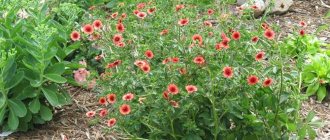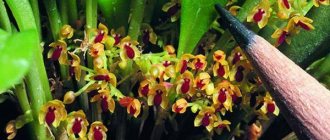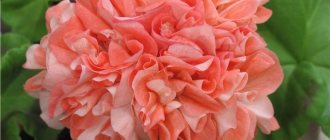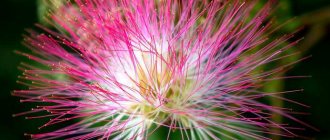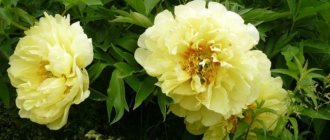The most popular types and varieties of cinquefoil
Cinquefoil herbaceous is a perennial flowering plant. It covers the ground with a dense green carpet. Carved leaves are fanned out on the stems and resemble paws. Popular herbaceous species in gardening:
- Nepalese;
- goose;
- white;
- straight or galangal;
- silver
The height of the stems of herbaceous varieties is from 30 to 90 centimeters.
Shrubby cinquefoil is a plant with tough shoots, popular in landscape design. The bushes retain their shape for a long time after pruning and bloom profusely. Types of shrubby cinquefoil that are often found in private gardens and city parks:
- Kuril;
- Daurian cinquefoil;
- Abbotswood;
- Red Ace.
Hybrid cinquefoil combines varieties with straight stems, glossy and double flowers in bright shades. Popular hybrids:
- Monarch Velvet;
- Ark En Sel;
- William Rollison.
Perennial cinquefoil that grows in the wild and is suitable for garden cultivation:
- forked - grows in rocky, sandy soil. The herbaceous plant forms a green cover 25 centimeters thick. Leaves with smooth edges and carved tips. The flowers are traditionally yellow and small, from 8 millimeters to 1.5 centimeters in diameter;
- strawberry-like - a low-creeping forest perennial similar to strawberries with carved velvety leaves, collected in pairs at the roots. The buds with a diameter of 16 millimeters are combined into inflorescences;
- Siberian - a tall variety with erect reddish stems reaching 60 centimeters in height. The leaves have serrated edges, are silvery on the inside and covered with down, like the stems. Yellow small flowers are collected in inflorescences.
Cinquefoil bush is known as Kuril tea. From the twigs and leaves of the plant brewed in boiling water, a vitamin drink is obtained.
Reproduction
A bush that has reached the age of three to four years can be propagated by division. The plant is dug up in spring or autumn. The roots are washed and cut into several parts, treated with a preparation that stimulates root growth, and planted, maintaining a distance of 20-40 cm between the bushes.
Propagation by cuttings should be done in cloudy weather; this can be done throughout the summer, and preferably in July - August. Cuttings about ten centimeters long are cut from the ends of any shoots.
Flowers are removed from the branches and planted for rooting in moist, fertile soil or in a shady place in the garden, covered with a jar. The cuttings need to be moistened several times a day, the emerging buds must be removed, and after 1-1.5 months the plants can be transplanted to a permanent place.
For propagation by layering, shoots that grow low near the ground are selected. Cuts are made on them from below, placed in a prepared trench, covered with earth and attached in several places with hooks. After the roots have formed, the shoots are separated and replanted.
Propagation by seeds takes quite a long time. Herbaceous species can be sown in open ground in the fall, but it is better to grow seedlings. Soak dried cinquefoil seeds in water for a day, then plant them in fertile, loose soil, water and cover with film. After a month, plant the seedlings in the ground.
Yellow flowers
In nature, the plant blooms with small yellow flowers. With the help of selection, decorative species with buds of different shades appeared:
- Goldstar - bushes with a spherical crown with a diameter of 120 centimeters. Plant height is 80 centimeters. The bright yellow flowers, 5 centimeters in diameter, bloom from early June to October. The fast-growing variety adds 15 centimeters in height and 20 centimeters in width per year;
- Jackman Variety - a tall variety of cinquefoil 1.5 meters in height;
- Hackman's Giant is a type of Kuril tea with a height of 70 to 100 centimeters. The pillow-shaped crown reaches 1 meter in diameter. Golden flowers bloom on the bushes;
- Elizabeth - forms a crown in the form of a pillow. Opens bright yellow flowers that look good against the background of coniferous shrubs;
- Kobold - quickly stretches to a minimum height of 60 centimeters. The maximum height does not reach a meter. Until September, light yellow flowers open on the bushes;
- Yellow Queen - a hybrid variety that grows 30 centimeters up from the ground, with shiny flowers reaching more than 3 centimeters in diameter.
See also
Planting and caring for Pushkinia in open ground, the best types and varietiesRead
Potentilla species with yellow flowers retain their color in hot, cloudless weather.
Landing
Plants prefer light, loose soil with a slightly alkaline or neutral environment. Representatives with pink flowers are the most demanding on soil quality. With the exception of white cinquefoil, which grows well in the shade, choose a well-lit place for planting, but slightly sheltered from bright sunlight.
Bush cinquefoil is planted in open ground in early April; it can be planted in late summer or early autumn. It is advisable to purchase seedlings with several shoots.
Before planting, the plant is watered with warm water. Dig a hole 50-60 cm deep, for seedlings from a container - twice the size of the earthen clod. A drainage layer 15-20 cm thick is laid out from pebbles or crushed stone.
To prepare the mixture, you need leaf soil, peat and sand in a ratio of 2:2:1, and 100-150 grams of mineral fertilizers are added here.
Pour a layer of mixture and place the plant in the planting hole, being careful not to bury the root collar. Fill the free space with planting mixture, water and mulch. After planting in open ground, you need to water the seedling well for three weeks.
Pink varieties
The following decorative types of Kuril tea look more original:
- Pink Beauty - the rich pink color of the petals does not change until the end of flowering;
- Pink Paradise - covered in bright pink flowers in July. Its peculiarity is semi-double petals;
- Princess - during a short flowering period from June to August, it blooms soft pink buds. The shade is not preserved and fades to white.
The pink color is not stable, so cinquefoil often loses its delicate color in the sun.
Composition and medicinal properties
Erect, white and goose varieties of cinquefoil are often used in medicine as a folk remedy. All parts of the cinquefoil are used to make potions. Currently, herbal decoctions, alcohol infusions or medicinal teas are prepared.
Castor bean: planting, growing, care and maintenance at home and outdoors (115 photos and videos)Bergenia - tips for properly growing a medicinal plant. Features of collection, application and contraindications (130 photos and videos of planting in the ground)
Cloudberries: beneficial properties, features of cultivation and use. Planting, care and propagation with your own hands (150 photos and videos)
Natural remedies have a positive effect on the functioning of the gastrointestinal tract, improve the treatment of pancreatitis, gastric ulcers, and help eliminate kidney stones.
By preparing a decoction of cinquefoil, you can cure colds and coughs, because it has an expectorant effect. The herb also has a positive effect on kidney function.
Cinquefoil is rich in beneficial acids and flavonoids. An infusion of alcohol has a beneficial effect on the functioning of the thyroid gland. At the same time, cinquefoil is used externally in the treatment of burns, as well as to stop various types of bleeding. Thanks to it, you can finally cure fungus, or diseases of the oral cavity such as stomatitis or periodontitis.
Orange varieties
The following types of cinquefoil are used to decorate borders and flower beds:
- Tangerine - the petals of a compact shrub change color. Copper tone appears in the shade and twilight, and yellow - at midday, in bright sun. The buds open in July;
- Mango Tango - orange-red petals with a yellow gradient in the center. The bush gives small growth and is distinguished by bright flowering;
- Hoplis Orange - petals retain their bright color when exposed to sunlight. The leaves shine thanks to silvery fibers. The variety blooms during the three summer months and until October.
The plants differ in the shades of their petals, but retain their natural ability to bloom for a long time.
Indian cinquefoil (P. indica)
Learning more and more about the plant world, scientists sometimes make discoveries where, it would seem, everything has been known for a long time. Not so long ago, Duchesne or Indian strawberry, familiar to many owners of personal plots and flower growers, was included in the Cinquefoil genus.
The plant was named Indian cinquefoil or Potentilla indica, and it can be distinguished from real strawberries by its characteristic yellow rather than white flowers, as well as by its inedible fruits.
In Russian gardens, Indian cinquefoil, which does not require special care, is grown as an ornamental ground cover crop, decorating the site from early spring until frost.
Red species
Potentilla varieties with red flowers are low hybrids:
- Marion Red Robin is a creeping plant. Red flowers in a muted brick hue appear in June and fade by September;
- Red Ace - a subshrub at the beginning of flowering, blooms bright scarlet flowers. In the sun they change their shade to copper;
- Gibson Scarlet - cinquefoil with blood-red shiny flowers, straight fleecy stems, 60 centimeters high;
- Miss Wilmott - belongs to the Nepalese varieties, is distinguished by lush flowering. The petals of the buds combine cherry and pink shades;
- Floris - petals of a coral shade acquire a fiery red color at the core.
An unusual variety of Nepalese cinquefoil is Roxana. The color of its buds is a mixture of coral, orange and red shades.
Red species of subshrubs will add a bright accent to a composition of white and yellow roses.
Silver cinquefoil (P. argentea)
Another herbaceous perennial is silver cinquefoil. In appearance, it is very similar to the previous plant, but slightly lower, and its yellow flowers have the traditional fifth petals. The culture received its name due to the whitish or almost gray felt covering on the stems, leaves and petioles.
Small flowers, up to 10 mm in diameter, form loose inflorescences that appear in early summer. Flowering lasts from 30 to 50 days. At the same time, medicinal raw materials with antibacterial, anti-inflammatory, strengthening, and hemostatic properties are collected.
Double flowers
Hybrid double and semi-double varieties bloom brightly, like Nepalese cinquefoil:
- Vulcan - opens large buds, red petals surround a yellow core;
- Emily is a plant with large flowers of a rich red hue. The petals are edged with a golden-yellow edge. The serrated leaves are shaped like strawberries;
- Ark-en-Sil is a low-growing strawberry-like hybrid that stands out for its dark red flowers with a crimson tint. The edges of the petals are decorated with a yellow border;
- Snowbird is a frost-tolerant shrub with light green leaves in June covered with white flowers with a yellow tint in the center. The variety blooms until the first frost.
Trimmed shrubs with double flowers from a distance resemble a rose bush.
Nepalese cinquefoil (P. nepalensis)
The era of geographical discoveries brought humanity not only acquaintance with new lands, but also with previously unknown representatives of the green world. Nepalese cinquefoil, which grows naturally in the western part of the Himalayas, has attracted the interest of botanists and gardeners:
- unusually large palmate leaves;
- pink or chimney-red flowers collected in sparse inflorescences with a diameter of up to 30 mm;
- shoots, like corollas, having anthocyanin coloring;
- flowering lasting up to 55 days.
Since 1820, the plant has been grown as an ornamental crop. Based on a wild variety, scientists have obtained large-flowered varieties that are as unpretentious and readily bloom as their ancestors from Asia.
An example is Miss Wilmott's Potentilla, with its showy pink flowers highlighted by a dark cherry-hued eye and a network of veins radiating from the center of each petal.
Large-flowered Potentilla
Types of Kuril tea with large flowers are used in Japanese garden design. The plants are also distinguished by their large leaves. The diameter of the open buds is 4.5-5 centimeters.
See also
Growing, planting and caring for dahlias in open groundRead
Large-flowered varieties:
- Darts Golddigger - a shrubby low cinquefoil covered in lemon-hued flowers. The frost-resistant plant is planted as a hedge. Flowering can be observed all summer and until October;
- Klondike - a shrub reaches a meter in height, blooms buds of a pale yellow hue. Tough shoots retain their shape for a long time after pruning. The variety is also suitable for hedges;
- Goldfinger - thin shoots form a rounded crown. The flowers are dark yellow;
- White Lady is a representative of the large-flowered group with white buds.
Potentilla varieties with large flowers come from wild Kuril tea, so yellow shades predominate in the color of their buds.
Features of care and cultivation in open ground
Many gardeners are interested in how to properly care for cinquefoil. The main step in caring for it is regular watering. If the air humidity is below 50%, then the plants are noticeably inhibited.
For your information! There are no drought-resistant varieties of this crop.
Practical tips for caring for and growing plants
To prevent drying out of the soil, tree trunk circles should be kept under constant mulch from a layer of peat or crushed bark with a layer of 8-10 cm. In rockeries and alpine hills, you can cover the soil with pebbles. To increase air humidity, ponds and pools are installed in the garden.
Watering mode
Cinquefoil can be watered with a fine sprinkler 1-2 times a week. The plant responds well to drip watering at intervals of 2-3 days. The system is turned on for 5-6 hours with water supplied through droppers in a volume of 2-3 liters per hour. In humid climates, the plant does not need watering.
Fertilizer and feeding
If the soil is not very fertile, then when planting and caring for the cinquefoil, mineral fertilizers with nitrogen, phosphorus and potassium are applied in the amount of 50-60 g per bush. You can apply fractionally 2-3 times during the summer, 20-30 g each, after dissolving it in a bucket of water.
Features of care during the flowering period
Sometimes, when there is a lot of flowering, it may be necessary to remove faded petals from under a hedge or a single bush. The petals fall so that the branches themselves remain quite aesthetic and do not require special care.
Cinquefoil after flowering
At the end of the season, small dark achenes can be seen at the ends of the branches.
For your information! If desired, the ends of the shoots can be trimmed using garden shears and thus get rid of the achenes. In spring, the bushes will begin to actively branch and look denser with abundant flowering.
Wintering
All varieties of cinquefoil have high winter hardiness. Plants do not need special shelter for the winter. In rare cases, young weak bushes can be insulated with spruce branches.
Possible diseases and pests
If rusty spots are noticed on the leaves, this is a fungal disease called rust. It can be easily combated by treating the bushes with scour preparations or polishers. Young leaves can be food for aphids or mites. In this case, spraying with fufanon is effective.
Cinquefoil shrubby its beauty and decorativeness will find application in any garden. Growing and caring for shrubby cinquefoil will not be burdensome. The main thing is to figure out how to plant, when the cinquefoil blooms and which variety is best to plant.
Cream varieties
The main color of the buds is called cream, but the color invariably has a yellow undertone:
- Day Down is a low shrub 60 centimeters high with a spherical crown. The flowers are distinguished by a yellow tint, which becomes brighter towards the center;
- Klondike - the bush grows up to 80 centimeters in height. Cream flowers with a yellow undertone fade towards the end of flowering;
- Primrose Beauty is an ornamental shrub with creamy yellow flowers reaching 90 centimeters in height. At the beginning of flowering, the petals are completely golden. By the end of the period they become lighter. The center remains deep yellow;
- Tilford Krim is short in stature, 50 centimeters. The color of the petals is creamy white. Flowering begins at the end of May and ends in September;
- Catherine Dix is a frost-resistant, light-loving hybrid. A distinctive feature is silvery-green shiny foliage.
Cream types also fade in the sun, like pink ones.
Possible diseases and pests
The plant is unpretentious and in most cases immune to various diseases. But in bad weather with rain and cold, plantings may be damaged:
- rust. Yellow-brown spots with spores on the inside appear on the foliage. Boric acid or potassium permanganate as a root fertilizer will help get rid of the problem. Treating cinquefoil with solutions of copper sulfate or colloidal sulfur helps greatly.
- scoops. Treatment with insecticides according to the instructions will eliminate pests from the cinquefoil.
- spider mites. The presence of parasites is characterized by the appearance of cobwebs and brown spots on the leaves. The problem occurs in hot and dry summers. You can remove mites by spraying the plant with a soap solution and ash.
- spotting. Yellow, gray or red spots form on the foliage due to temperature changes, dry air, lack of light or nutrients. Treatment consists of using fungicides. Heavily infected stems must be eliminated.
Important! The plant should not be planted near pine trees, on which rust spores often remain after wintering.
Sometimes you can find caterpillars on shrubs that eat the foliage and lay eggs on the lower leaves. As a result, it is impossible to grow the five-leaf plant well developed; it will gradually begin to dry out. Insecticides will help get rid of pests.
Kuril tea is a beautiful plant that will decorate a garden, cottage or area near the house with bright flowers. Shrubs come in both large and low-growing varieties. The plant is often used for colds in the form of tea, if there are no contraindications. Gardeners, especially beginners, should know when the unpretentious white shrubby cinquefoil blooms, how to care for it and the rules for planting it in the ground.
Ivory flowers
The shades of white varieties are close to the noble color:
- Abbotswood - a meter-high shrub is often planted on an alpine hill. Its flowers are gathered in clusters;
- Vichi is a tall shrub reaching 150 centimeters in length and width. A distinctive feature is the small red stamens;
- McCay's White is a bush variety with a creamy undertone to the petals. The stamens are distinguished by bright yellow dots;
- Menkhi - distinguished by green leaves with silver edges;
- Farrers White is an elegant flowering shrub.
Breeders have not yet been able to obtain pure ivory color. Similar tones are also found among cream-colored cinquefoil species.
Transplanting shrubby cinquefoil into open ground after purchase
It is recommended to purchase plants in containers with a closed root system. Before purchasing, you should carefully study the information about the variety and age of the seedling. The best time to plant cinquefoil is spring. During this period, there is no risk of freezing of thin roots and young shoots.
Site selection and soil
Phlox flowers: varieties, what they look like, types
Cinquefoil loves rocky, well-drained soil rich in organic matter.
Important! Cinquefoil shrub prefers soil with a neutral or slightly acidic reaction and does not tolerate alkaline soils.
If the soil on the site is sandy, you should add clay, fertile loamy soil and peat. Such areas allow water to pass through well, and there is no need for drainage here. On heavy clay soils, on the contrary, it is necessary to add sand and organic matter.
Planting process
Planting holes are prepared in the fall. The depth of the hole should be 60-70 cm, it is calculated based on the volume of the root system of the plant in adulthood. The bottom of the pit is covered with a drainage layer up to 25 cm of pebbles, expanded clay, and broken brick. Loose garden soil, humus, and peat are poured on top. If necessary, clay or sand. All components are thoroughly mixed.
The plant is freed from the container, placed in a hole with a lump of earth so that the root collar is at ground level, and covered with soil mixture. When the roots are completely covered with soil, they are further compacted and then watered with 10-12 liters of water.
Choosing the optimal location
In regions with cool summers, cinquefoil can be grown in full sun. In hot climates it is better to plant it in partial shade. On an alpine hill, the five-leaf plant will feel good in the middle and lower tier, provided there is good moisture drainage.
Note! Low-growing varieties can be grown on non-eroded slopes as cover and protective plants.
How to plant cinquefoil bush
To create low borders, cinquefoil is planted at a distance of 40-60 cm from each other. When planting taller hedges, a planting pattern is used with a distance of 60-80 cm between plants. In compositions with other plants, cinquefoil is planted so as not to overlap it with the crowns of other trees and shrubs, but to leave 15-20 cm gaps between them to emphasize the expressive spherical shape of the cinquefoil.
Low growing varieties
Hybrids that do not grow above 50-60 centimeters:
- Jolaina - a dwarf cinquefoil with large yellow-orange flowers, characterized by abundant flowering and frost resistance;
- Dakota Sunrise - a dense cushion-shaped shrub with pubescent leaves blooms profusely with yellow flowers;
- Rhodocalyx - low cinquefoil with snow-white buds;
- Summerflower - shoots stretch upward and form a crown in the shape of a hemisphere. Large yellow flowers stand out against the background of gray-green small leaves. Flowering lasts from early summer to late autumn. The color of the petals is yellow with a golden tint;
- Goldteppich - the rich yellow color of the variety’s buds will serve as an accent in the coniferous composition. The bushes are winter hardy and immune to powdery mildew.
Hybrid varieties combine several decorative qualities. Low-growing bushes bloom with large buds. Potentilla species with flowers in fiery shades are classified as red and orange. What they have in common with their regular herbaceous relatives is resistance to cold and ease of care.
Cinquefoil (P. fruticosa)
A real find for breeders was the cinquefoil bush or, as the plant is popularly called, five-leaf, Kalmyk or Kuril tea. Unlike herbaceous relatives, this species:
- forms a dense, often spherical crown and reaches a height of 60–120 cm;
- the variety of colors is amazing;
- blooms non-stop for 3–4 months;
- has small, five-fingered leaves;
- does not lose the above-ground part during the winter period.
Thanks to cultural enthusiasts, today flower growers have at their disposal several dozen spectacular varieties with white, yellow, pink, salmon, orange and red flowers.
One of them is the Goldfinger cinquefoil (P. fruticosa Goldfinger) shown in the photo. The fast-growing crop forms a bush 80 cm tall with a dense spherical crown, smooth dark green leaves and 5 cm deep yellow flowers. Lush, continuous flowering lasts all summer, until frost in mid-autumn.
Another noteworthy variety is the Red Ice bush cinquefoil (P. fruticosa Red Ace). The variety bred in Great Britain is distinguished by a compact, wide-rounded crown with a height of up to 60 and a diameter of about 100 cm.
Not afraid of polluted city air, frost and easily tolerant of pruning, the crop prefers sun or partial shade, responds well to watering and blooms profusely throughout the warm season.
The orange or salmon flowers of this variety look great against the background of smooth, fairly light foliage.
Lovers of red flowers, which perfectly enliven the garden plot, will love the Marion Red Robin cinquefoil (P. fruticosa Marion Red Robin). The shrub form is distinguished by its small size. The dense crown, not exceeding 50 cm in height, can grow up to 80 cm in width. The brownish shoots are densely covered with small light green foliage, against which large flowers of a rich scarlet hue look doubly advantageous. The variety is versatile and can be used both in single and group plantings.
Shrubby cinquefoil shows itself well in low borders, on slopes and in large flowerpots. To maintain its shape, the plant can be cut, and flowering is quickly and completely restored.
The Abbotswood cinquefoil (P. fruticosa Abbotswood) is recognized as the most beautiful variety with white flowers. Compared to the varieties described above, this plant cannot be called compact. An adult bush reaches a height of about 100 cm and a diameter of 130–150 cm. The crown, resembling a dense pillow, is covered with small light green foliage from the beginning of spring, and already in June large, spectacular flowers of pure white color with a yellow core and stamens raised above the corolla appear.
Flowering lasts until September, and when planted in the sun, the plant feels much better than in partial shade; it blooms longer and more abundantly. In spring, it is recommended to trim the shrub.
Description and distinctive features
Cinquefoil (Potentilla) belongs to the Rosaceae family, which is one of the largest in terms of the number of species. The shrub is also called “Kuril tea” or “pentifolium”. There is an old belief according to which the epic hero won victory thanks to the smell of an amazing plant. Namely, the brave Ilya Muromets, getting ready to fight the Nightingale the Robber, inhaled the aroma of Kuril tea and felt unprecedented strength within himself.
Indeed, this amazing plant is not just a decoration for the garden plot, but also has various medicinal properties. Cinquefoil is widely used by traditional healers. Translated from Latin, Potentilla means “strength” and “power”.
In nature, there are several types of plants: shrubby, low-growing, herbaceous and tall. All varieties can decorate a garden plot. However, the undoubted favorite among decorative flowers is red cinquefoil.
How to care for cinquefoil grass
Caring for this plant is not difficult at all. It is necessary to follow the rules of watering and fertilizing. Carry out timely sanitary pruning of the plant.
Watering
Maintaining constant humidity under the bush is the key to abundant flowering and active growth of cinquefoil. Watering is carried out with warm water. After moistening the soil, the soil needs to be loosened and mulched.
Top dressing
The plant loves enriched soil. In spring, 40 g of potassium sulfate and 30 g of phosphate fertilizer must be added to the ground. The mixture is diluted in 10 liters of warm water and poured under each bush.
To maintain the plant during flowering, phosphorus-potassium fertilizer is added to the soil.
Trimming
In autumn, sanitary pruning of any shrub involves removing all diseased and old shoots. In spring, branches are cut to 2/3 of their length.
To create a decorative look, you can create any shape from cinquefoil.
